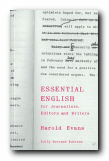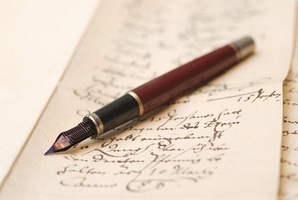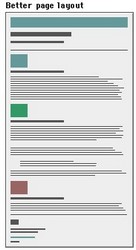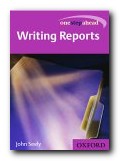guidance on good writing and editing techniques
Harold Evans was editor of The Sunday Times from 1967 to 1981 and then of The Times for a year. [He’s now a New York celebrity with a famous wife]. His earlier publication Newsman’s English was written in the 1970s and has now been revised and updated. Essential English for Journalists is a guide to improving the efficiency of your writing by a method which he announces at the outset as ‘a process of editorial selection, text editing, and presentation’.
 In fact he gets off to a slightly shambolic start by describing the various responsibilities for writing in the newsroom, but then settles down to his main subject – the crafting of good prose – where he is quite clearly at home. There’s plenty of good advice on sentence construction, editing for clarity, choice of vocabulary, avoiding obscurity and abstraction, plus eliminating vagueness and cliche. He also includes explanations of words commonly misunderstood – such as chronic, disinterested, and viable (to which he might have added aggravate, which is mistakenly used in the text as a synonym for annoy) – plus some interesting comments on how speeches can be economically digested and reported.
In fact he gets off to a slightly shambolic start by describing the various responsibilities for writing in the newsroom, but then settles down to his main subject – the crafting of good prose – where he is quite clearly at home. There’s plenty of good advice on sentence construction, editing for clarity, choice of vocabulary, avoiding obscurity and abstraction, plus eliminating vagueness and cliche. He also includes explanations of words commonly misunderstood – such as chronic, disinterested, and viable (to which he might have added aggravate, which is mistakenly used in the text as a synonym for annoy) – plus some interesting comments on how speeches can be economically digested and reported.
The general tendency of his advice is to prefer the shorter, concrete, and Anglo-Saxon term to the longer, abstract, and Latinate expression which is all-too-prevalent: fire not conflagration, try not endeavour, end not terminate.
He also offers a long and entertaining list of common expressions which roll out of literary-cum-oral usage whose redundancies can be edited to produce a tighter result – ‘blue coloured car’, ‘crisis situation‘, and ‘in the city of Manchester’
Evans gives detailed advice on the structure of good writing. His pages on how to write an introduction will be useful to anybody who wants to make their writing more effective. [In fact I would urge the strategy on those who would like to make the arguments of academic writing stand more clear.] The basic rule is to strike out anything which is not absolutely necessary.
In the centre of the book there is a detailed exposition of how newspaper reports should be written – with critical comments on their structure and narrative strategy. Evans shows how the same basic facts can be arranged to create different emphases. This is an exemplary tutorial for anyone who wishes to acquire the skills of reporting and successful composition.
For all its subject, it’s written in a slightly inflated style which combines the short journalist’s sentence with the vocabulary of an Edwardian litterateur – very self-conscious and aware of its own rhetorical devices.
Readers have not the time and newspapers have not the space for elaborate reiteration. This imposes decisive requirements.
But the advice is sound, and it’s likely to make you look more closely at your own prose. In fact the book has at least three possible readers. It would be an excellent textbook for trainee journalists, especially given the number of clumsy examples Evans quotes and then rewrites as demonstration pieces. Second, it has plenty of tips for experienced journalists and editors trying to write more efficiently. Third, it is full of useful guidance for anyone – beyond the media – who wants to write more coherently.
Evans’ fellow journalist Keith Waterhouse wrote a similar and very amusing guide called Waterhouse on Newspaper Style which unfortunately often seems to be out of print. The two books would make an excellent pairing on any writer’s desk. It would be wise to grab Evans whilst he’s back in re-issue.
© Roy Johnson 2000
Harold Evans, Essential English for Journalists, Editors and Writers, London: Random House, 2nd revised edn 2000, pp.256, ISBN: 0712664475
More on writing skills
More on language
More on grammar
 Microsoft’s Manual of Style illustrates the company’s rules for both print and screen writing, as well as their requirements for visual presentation and language use.
Microsoft’s Manual of Style illustrates the company’s rules for both print and screen writing, as well as their requirements for visual presentation and language use. You can improve your spelling skills by reading and writing as much as possible – and checking your written work.
You can improve your spelling skills by reading and writing as much as possible – and checking your written work.



 Many people have difficulties knowing how to use and in a sentence. That’s possibly because it is such a common word.
Many people have difficulties knowing how to use and in a sentence. That’s possibly because it is such a common word.